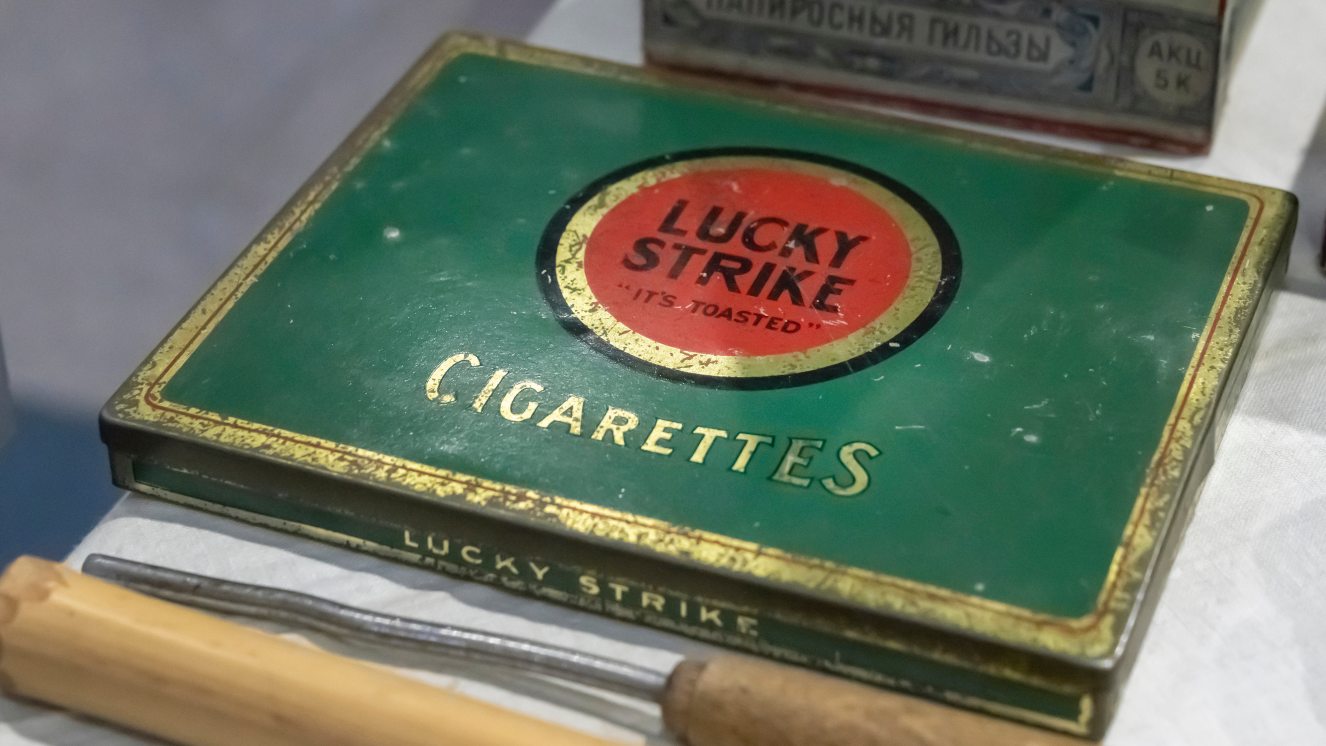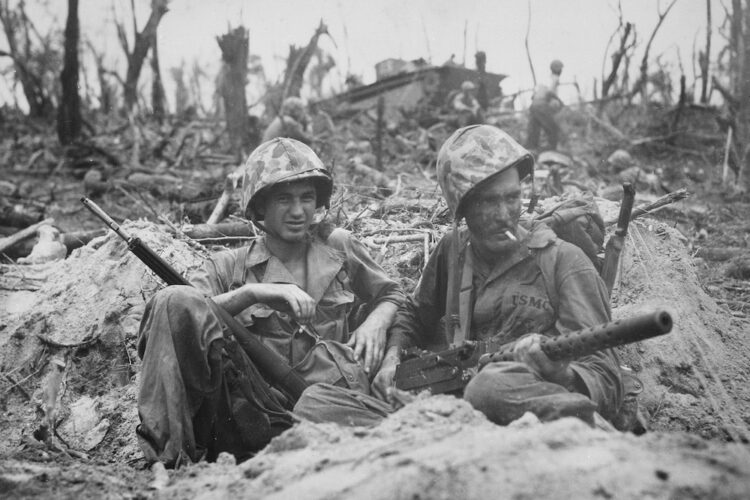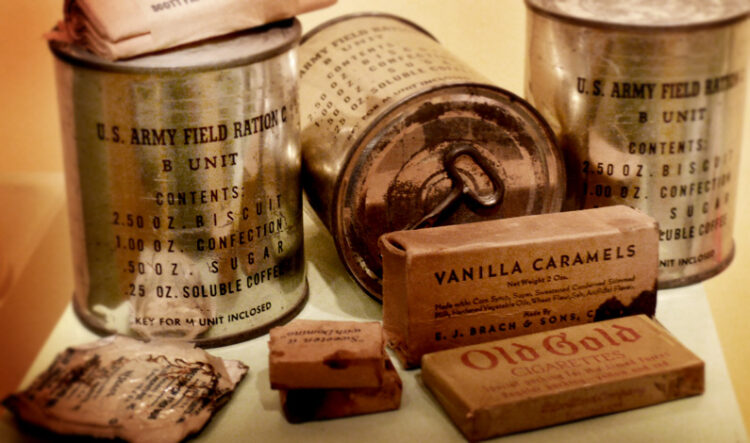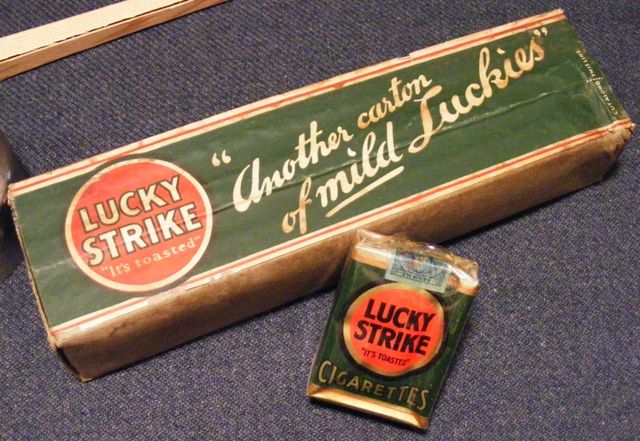During World War II, Lucky Strikes cigarettes became an iconic symbol of smoking culture, particularly among soldiers and civilians alike. The brand of Lucky Strikes can be traced back to the early 20th century. Introduced by the American Tobacco Company in 1871, Lucky Strikes gained popularity as a premium cigarette brand known for its fine tobacco blend. However, it was during the Second World War that Lucky Strikes truly made their mark. As the conflict escalated, the government imposed strict regulations and rationing on various commodities, including tobacco. The War Production Board (WPB) established a system to control the distribution of vital resources, ensuring their availability for military purposes. One of the measures implemented by the WPB was the restriction of cigarette manufacturing to conserve critical supplies. As a result, civilian production of cigarettes was significantly reduced, and the majority of tobacco was allocated to the armed forces. However, Lucky Strikes found a unique way to maintain their prominence during this challenging time.
Lucky Strikes introduced a bold marketing campaign that capitalized on their distinctive green packaging and the wartime spirit. They launched the slogan “Lucky Strike Green Has Gone to War,” emphasizing their commitment to the war effort and the fact that the brand’s green packaging was unchanged. The packaging became a symbol of American resilience and continuity. Furthermore, Lucky Strikes initiated a series of advertisements that encouraged smokers to send their unused cigarettes to servicemen overseas. The campaign appealed to the patriotic sentiments of consumers, urging them to support the troops by sharing the pleasure of Lucky Strikes. These “Lucky Strikes for Soldiers” initiatives gained widespread popularity and garnered significant public participation.
The success of this campaign led to Lucky Strikes becoming synonymous with the American spirit and the war effort. Soldiers in the field, both American and Allied, often received packages of Lucky Strikes from home, providing them with a moment of comfort and connection. As part of the military’s effort to provide essential supplies to troops, Lucky Strikes found their way into C-Rations, the field rations issued to servicemen. Let’s delve into the significance of Lucky Strikes in C-Rations and their impact on soldiers during the war. C-Rations were prepackaged meals provided to soldiers in combat zones, designed to sustain them in the field. These rations typically included a variety of food items, such as canned meat, biscuits, coffee, and other necessities.
The inclusion of cigarettes in C-Rations served several purposes. Firstly, smoking was a prevalent habit among soldiers during World War II, and it was recognized that access to cigarettes could provide a sense of comfort and relief in the midst of the challenging wartime conditions. Cigarettes offered soldiers a brief respite from the stress and uncertainty of combat, providing a momentary escape and camaraderie during shared smoke breaks. Secondly, cigarettes served as a valuable morale booster. In a time when soldiers were far away from home and faced with the hardships of war, receiving a pack of cigarettes provided a small reminder of normalcy and a connection to civilian life. The act of smoking and sharing cigarettes with fellow soldiers fostered a sense of unity and solidarity, helping soldiers maintain their spirits during difficult times.
Lucky Strikes, in particular, became synonymous with the wartime experience due to their distinctive association with the American tobacco industry and the brand’s clever marketing strategies. The presence of Lucky Strike cigarettes in C-Rations further solidified their status as an iconic symbol of the war effort. It’s worth noting that Lucky Strikes were not the only brand of cigarettes included in C-Rations. Various other brands, such as Chesterfield and Camel, were also distributed to troops alongside Lucky Strikes. The intention was to provide soldiers with a range of choices to suit their personal preferences.
While the inclusion of cigarettes in C-Rations was met with appreciation by many soldiers, it’s important to recognize that smoking also carried health risks. The long-term effects of smoking were not fully understood at the time, and cigarettes were viewed as a comforting and familiar item rather than a health concern. In subsequent years, awareness of the detrimental effects of smoking would grow, leading to changes in military policies regarding tobacco use.




